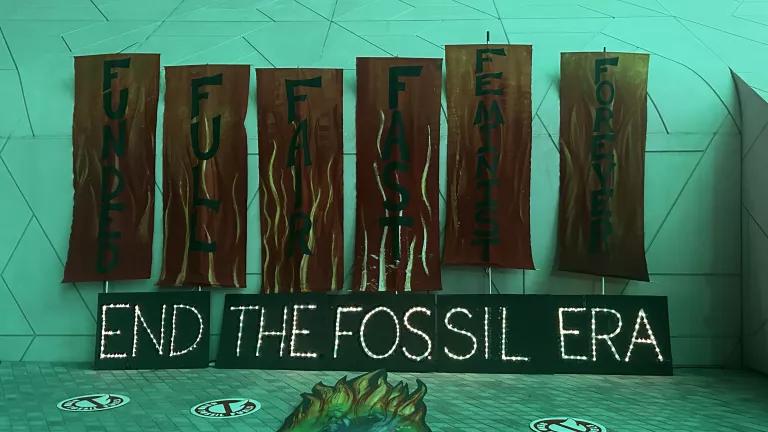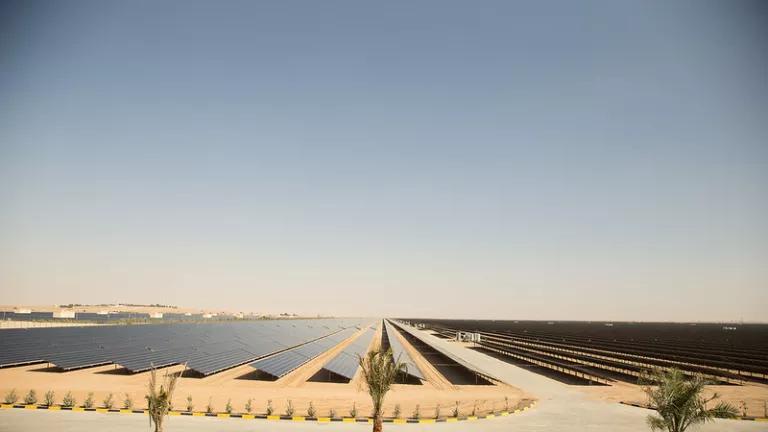Worried About Grid Resilience? Don’t—You Can Sleep Well

Secretary of Energy Rick Perry has warned of an energy nightmare in which coal and nuclear power plant retirements threaten the resilience of the power grid and risk widespread blackouts. But as the Sustainable FERC Project (housed within NRDC) and 16 other organizations explain in comments filed with the Federal Energy Regulatory Commission (FERC) today, Perry’s nightmare scenario is just that—a dream out of touch with reality.
As a quick recap, last fall, Perry asked FERC—the independent federal agency that regulates the interstate high-power grid—to greenlight profit guarantees to coal and nuclear power plants. While FERC unanimously rejected Perry’s request in January, FERC agreed that it “must remain vigilant with respect to resilience challenges.” To that end, it asked the regional grid operators and the public to comment on what constitutes a resilient grid and focused its request on the part of the grid under its jurisdiction: the high-power or bulk power system (BPS). The BPS consists of the power plants, transmission lines, substations, transformers, and associated control equipment spanning America. The grid operators submitted their comments to FERC on March 9 and everyone else was required to submit theirs by today.
You can read our full comments here, but these are the key points.
Resilience, reliability; tomato, tomato; potato, potato
Perry has made a big deal out of grid resilience as opposed to grid reliability. While reliability and resilience aren’t synonyms, they’re interrelated. Resilience means the grid’s ability to withstand and recover from extreme weather or other severe threats, while reliability means keeping the lights on overall—the end goal of any grid operator.
Among their many responsibilities, grid operators already must meet reliability standards set by the FERC-certified North American Electric Reliability Corporation (NERC). Do these standards also ensure resilience? NERC thinks so, noting in its comments filed today that a BPS that meets its “adequate level of reliability” standard is also resilient. This is because a system that successfully keeps the lights on (reliability) necessarily also includes some ability to withstand extreme events (resilience). This is also why FERC Commissioner Cheryl LaFleur explained in her concurrence to FERC’s January 8 order that, for purposes of FERC’s authority over the BPS, resilience “is unquestionably an element of reliability.”
A customer-focused resilience approach
As I noted last week, because there is so much overlap between resilience and reliability, it risks redundancy to simply add resilience standards on top of existing reliability standards. The better question is, will new requirements add something to the customer experience? This is important because customers end up paying the costs for any requirements the grid operators must meet. FERC should resist imposing resilience requirements that increase customer bills without demonstrated benefit.
The grid is reliable AND resilient
The grid operators aren’t waiting for FERC to act on resilience. In addition to the NERC reliability standards, grid operators employ a variety of initiatives to address and solve resilience challenges, including those caused by climate change, generation mix shifts, etc. Examples include ongoing improvements to operations, markets, and planning, cyber security defense, and after-the-fact operational reviews of challenging events. These efforts predate pressure from Perry and others to ensure grid resilience.
Also, despite Perry’s “sky is falling” declarations regarding coal and nuclear plant retirements, as Perry’s own Department of Energy (DOE) acknowledged last summer, the grid has become more reliable in the last 15 years—notwithstanding coal and nuclear retirements. Or, as the DOE report put it in technical terms, “at the end of 2016, the system had more dispatchable capacity capable of operating at high utilization rates than it did in 2002.”
It isn’t surprising then that five of the seven grid operators have expressed no short- or long-term resilience concerns. The other two, PJM (which covers the mid-Atlantic and some of the Midwest) and ISO-NE (which covers New England), raised discrete long-term reliability and resilience issues in their comments. My colleagues Jennifer Chen and Bruce Ho discuss those comments here and here, but here’s the gist.
Both PJM and ISO-NE agree that their grids are resilient and reliable today. ISO-NE’s concerns derive from an incomplete and flawed study about ISO-NE’s long-term fuel security. Based on that study, ISO-NE concluded that it could face fuel security issues in 2024-2025 due to regionwide challenges in obtaining natural gas during severe cold weather periods. But as outlined in a report published this month based on newer data from ISO-NE, ISO-NE’s original study suffered from methodological and data-based flaws that render its results erroneous. When these errors are corrected, the study shows no operational or reliability threats. In fact, as New England continues to add more renewable energy and energy efficiency as mandated by state laws, the region is becoming more, not less, fuel secure.
PJM’s comments expressed concerns that its grid, although reliable and resilient today, could struggle as coal and nuclear generation continue to retire. As noted in a report I discussed last week, PJM’s own research shows that it can maintain long-term resilience and reliability through a variety of resource portfolios, including those with “very high renewable penetration—dozens of times higher than current levels[.]” And despite facing some of the most severe cold snaps in a generation—including the 2014 Polar Vortex—PJM has survived.
If the grid operators have this under control, what can FERC do?
Despite FERC’s focus on the BPS, customers are far more likely to suffer power outages from downed local lines on the distribution system, which is the more than 6 million miles of wires and poles that carry power from power plants and the BPS to our homes and businesses. Unlike the BPS, the distribution system is not within FERC’s jurisdiction. This means that many of the most effective resilience measures are outside of FERC’s authority and instead need to come from states and towns.
This does not mean that FERC is powerless to assist resilience and reliability efforts. For example, FERC can bolster distribution-level efforts by implementing policies that require grid operators to plan transmission among grid regions, allowing them to share power more easily and strengthening grid resilience. FERC also can help by taking steps to fully integrate into the grid rooftop solar and other customer-facing energy technologies, as these do not depend on the distribution system. FERC can also support the development of markets that better recognize the contributions of renewable resources.
While any of these efforts would strengthen current resilience and reliability efforts, do not let fears of an unreliable grid keep you up at night. To the contrary, the key takeaway here is that the grid is—and will continue to be—resilient and reliable.
Secretary Perry’s nightmare is just a dream.
The 17 organizations are: Sustainable FERC Project, Natural Resources Defense Council, Acadia Center, American Wind Energy Association, Clean Wisconsin, Conservation Law Foundation, Earthjustice, Environmental Defense Fund, Environmental Law & Policy Center, Fresh Energy, NW Energy Coalition, Sierra Club, Southern Renewable Energy Association, Union of Concerned Scientists, Vote Solar, Western Grid Group, and Wind on the Wires.




